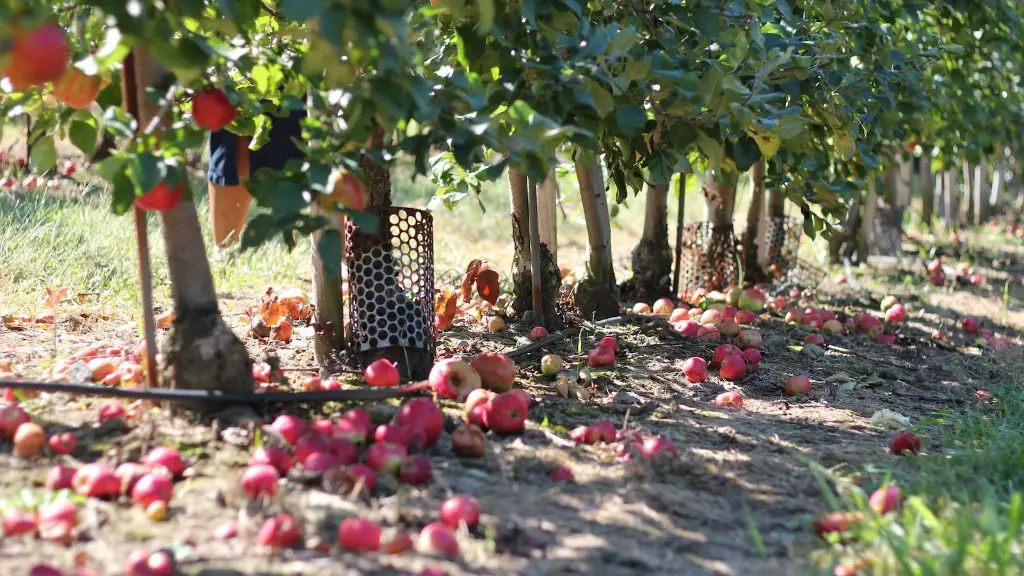When most people think about planting an apple tree, their first thought is to find the best place to do so. While many factors such as soil type, availability of water and sunlight, as well as the climate of the region all play a role, the place to begin is by considering the types of apple varieties to planting. Depending on the desired apple and the size of the tree at planting, different varieties can require different rootstock, soil conditions, distances between trees and sun exposure.
Rootstock is the root system of which the apple scion is grafted. Depending on the soil composition and its ability to drain, different rootstocks may do better. For example, if the soil is heavy clay or very water logged continuously, M7 rootstock may be better, while if the soil drains well but is on the heavy side, M26 might be a better bet. Both are semi-dwarfing, but 26 is more vigorous and can produce larger trees than M7.
The next consideration is the proximity between two trees, as this is an important factor in successful pollination. For the most part, trees will need to be around 35 to 50 feet apart. If trees are closer, they may experience competition for resources, resulting in lower yields.
The amount of sunlight is also a factor in the planting process. Apple trees need a minimum of 8 to 10 hours of sunlight each day to produce a good harvest. If they are planted in a shady area, then the amount of apples produced will be limited.
Finally, a reputable nursery should be consulted to determine which particular varieties of apples are well-suited for the climate. Before planting, be sure to research and choose the best variety for the area so that the tree will be healthy and produce a good harvest.
Availability of Water
Water is important for the growth and health of apple trees, and to ensure a good harvest, adequate watering is essential. Apple trees must be kept consistently moist, especially in their first two years of growth. Depending on various factors, including the most recent rainfall amounts, trees may need to be watered more. In dry spells, additional water should be provided, such as in the form of drip irrigation.
The Climate of the Region
The climate of the region is also important to consider when planting an apple tree. Of course, the variety of apple chosen both determines and is determined by this factor. As a rough guide, apples fall into Group 1, 2 and 3; Group 1 applies to areas that are generally warm and prone to frost, Group 2 for moderate climates and Group 3 for places with colder winters and less frequent frosts.
The Soil Type
Apples thrive best in well-drained slightly acidic soils, a soil pH of 6.5 to 7.5 is recommended. In heavier, clay soils, it is important to take extra steps to improve drainage and ventilation. This can be achieved by digging in plenty of compost, adding horticultural grit, or planting on raised beds.
Preparing the Planting Site
Once the best location for an apple tree has been determined, it is time to prepare the site for planting. In an orchard, trees should be planted slightly higher than the surrounding ground to ensure that water doesn’t pool at the base of the trunk and rot the roots. A hole should be dug slightly wider and deeper than the rootball, ensuring that there is plenty of room for healthy root development. The soil removed from the hole should be blended with some compost, and then returned to the hole once the tree has been placed, before firmly firming down.
Mulching the Planting Area
Once planted, the soil surrounding the tree should be mulched. This helps the roots to remain consistently cooled and moist, while also preserving moisture in the soil. A good layer of soil, such as well-rotted compost, bark or straw should be added once the tree has been put into the ground. This should then be covered by around 5 cm of material, ensuring that the trunk is not covered over.
Fertilizing and Pruning
Once an apple tree is planted, fertilization and pruning are important steps in maintaining its health and producing a good harvest. Fertilizing should occur in early spring, using a balanced fertilizer such as a 10-10-10 blend. Pruning should be done in late winter or early spring, depending on the variety, with the goal of controlling the size, shape and vigor of the tree. Pruning can involve removing dead wood, crossing or rubbing branches, and thinning or cutting thick fruiting wood to promote proper air flow and light penetration.


